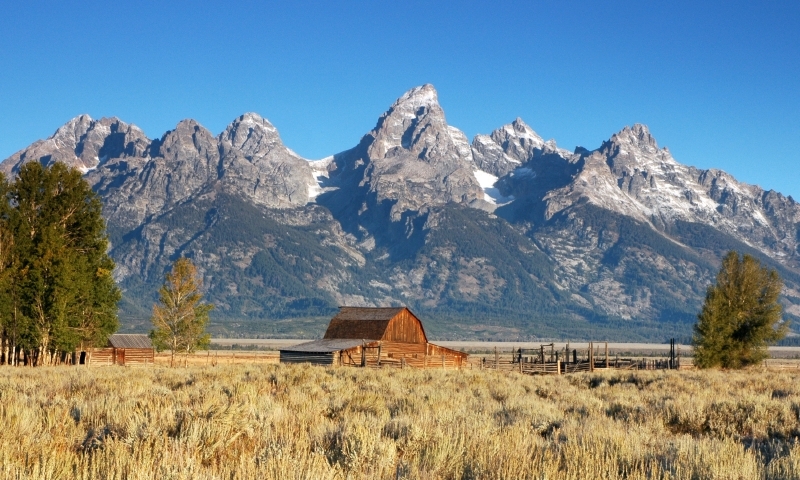- Listed in the U.S. National Register of Historic Places.
- Six separate clusters of buildings illustrate the homesteader’s way of life.
- An excellent destination for photography.
- Abundant wildlife watching opportunities.
- Located at the east end of Grand Teton National Park.
Overview
Mormon Row may be one the most picturesque areas of Grand Teton National Park, with rustic, wooden buildings surrounded by open fields, grass and sage standing out against the stunning backdrop of the Tetons. For watching wildlife; taking a quick, easy walk; for seeing into the lives of the West’s early settlers, a trip to Grand Teton National Park really isn’t complete without a visit to Mormon Row.
History
The groups of old farm buildings known as Mormon Row have withstood the elements for more than a century, since the farmland here was first homesteaded by the predominantly Mormon settlers in the early 1900s. After the Rockefellers Snake River Land Company bought the majority of the land and transferred it to the Park Service, the buildings were allowed to decay until the 1990s, when their cultural value was recognized and steps were taken to preserve them. Today, six homesteads and a single ruin provide visitors a glimpse into the past of Jackson Hole Valley.
Wildlife
The open fields of Mormon Row and Antelope Flats are a great place to find bison, antelope, moose, coyotes, ground squirrels, northern harriers, kestrels and sage grouse.
Location
Mormon Row is located in Grand Teton National Park off of Antelope Flats Rd, about one mile east from Hwy 26/89/191. The Antelope Flats turnoff is just north of Moose Junction.
Seasons
In the winter, Antelope Flats Road is only plowed for the first mile to a parking turnout. An easy cross-country ski or snowshoe out to Moulton Ranch (one of the main homesteading sites) makes a great winter adventure.
During the summer, the plains around Mormon Row are covered with tall grasses and flowers, providing habitat for abundant wildlife.







